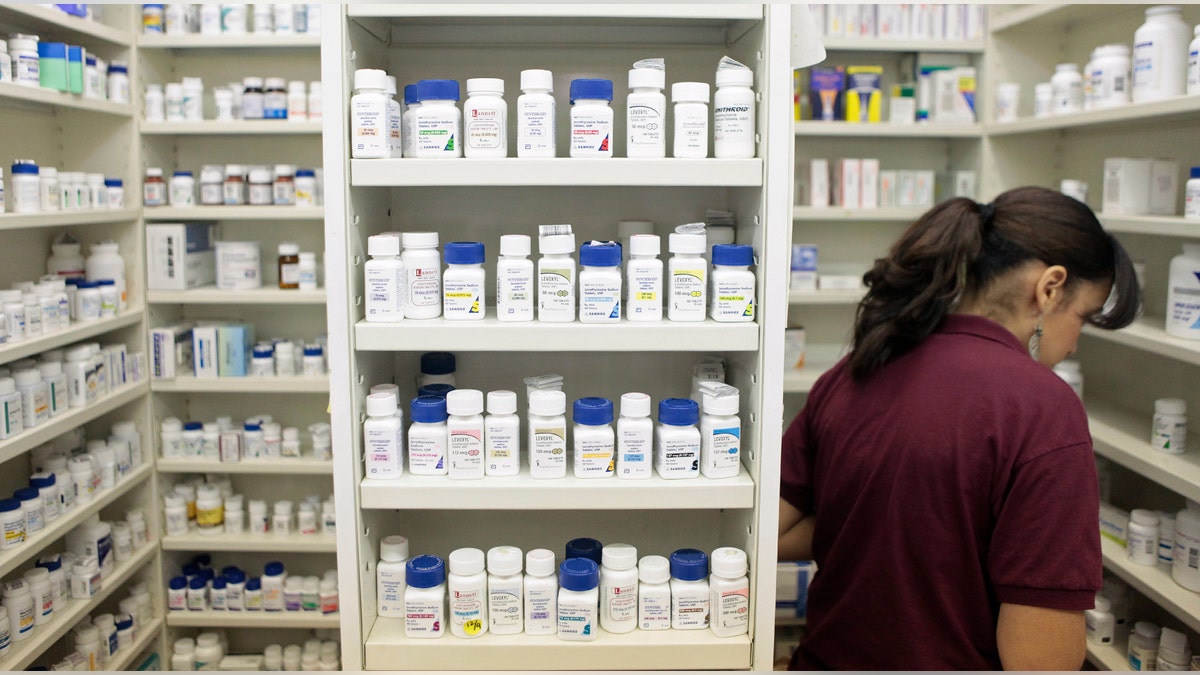
A pharmacy employee looks for medication as she works to fill a prescription while working at a pharmacy in New York December 23, 2009. REUTERS/Lucas Jackson (UNITED STATES - Tags: HEALTH POLITICS) - RTR28BCM (REUTERS/Lucas Jackson)
When patients have drug benefits that encourage them to save money by using certain pharmacies, they may end up filling more prescriptions, a company-funded study suggests.
Narrow pharmacy networks that cover prescriptions only at certain retailers and drug benefits that offer consumers lower out-of-pocket fees at a subset of preferred pharmacies have become more common in recent years as a way to limit premium increases and curb drug spending.
The plans have raised concerns that restricting coverage to certain drugstores might make some people less likely to fill prescriptions, especially if the in-network retailers are too far away, said senior study author Dr. William Shrank, chief scientific officer at CVS Health.
But this didn't happen in the study from the CVS, one of the largest operators of retail pharmacies and mail-order prescription plans in the U.S.
"Our research found that patients did not stop taking their medications, and the narrow networks actually enhanced patients' use of medications through improved adherence," Shrank said by email.
"This research is important because there are few opportunities in health care where we can both improve quality of care and health outcomes while managing costs," he added.
To explore the link between narrow networks and consumer behavior, Shrank and colleagues analyzed data from 2012 to 2013 for members of CVS prescription plans and compared prescriptions filled before and after narrow networks were implemented.
Researchers focused on daily medications to manage chronic health problems such as high cholesterol, high blood pressure, diabetes and depression. They tracked how many days of pills were included in each prescription and how often patients got refills, a measure known as a medication-possession ratio (MPR).
The analysis included records for about 68,000 people who switched to narrow networks during the study period and about 150,000 individuals who didn't.
Although the MPR improved for patients in both types of drug plans over the study period, the gains were more pronounced for people in the narrow networks.
For statins to manage cholesterol, the people who switched to narrow networks got timely refills about 78 percent of the time before the change and about 80 percent of the time after the switch. Roughly 81 percent of people who didn't switch to narrow networks during the study got timely refills, though there was a slight increase from 2012 to 2013.
Among people who switched to narrow networks, about 80 percent got timely refills of blood pressure pills in 2012 and about 81 percent did so in 2013. For those who didn't transition to narrow networks, timely refills increased slightly but remained at about 83 percent of prescriptions.
With diabetes drugs, the timeliness of refills increased from 76 percent to 77 percent among people who switched to narrow networks, while staying around 80 percent for individuals who didn't switch.
People who transitioned to narrow networks got timely refills of antidepressants 70 percent of the time in 2012 and 72 percent of the time in 2013, while timely refills increased from about 73 percent to 74 percent among individuals who didn't switch.
One shortcoming of the study is that people in the plans that didn't switch to narrow networks filled prescriptions more regularly at the start of the study, leaving less room for improvement, the authors acknowledge in JAMA Internal Medicine.
They also note that they didn't explore clinical differences among patients that might help explain the changes in rates of adherence.
It's possible that the narrow network plans available through CVS may not get the same results as drug benefits available elsewhere, Jack Hoadley, of the Health Policy Institute at Georgetown University in Washington, DC, noted in an accompanying editorial.
"The small gains found in adherence may be associated with more affordable co-payments, but we don't know from the study what difference there was in co-payments," Hoadley said by email.
"Many factors are associated with whether people fill prescriptions and take their medications, including the presence of side effects or how many drugs they are prescribed in total," he added.
